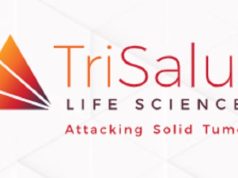
New European Society of Medical Oncology (ESMO) biliary cancer guidelines indicate yttrium-90 (Y-90) therapy as an option for post-chemotherapy treatment of intrahepatic cholangiocarcinoma.
Sirtex has announced that ESMO has indicated the use of radioembolization, also called selective internal radiation therapy, using Y-90 microspheres, as an option in for the treatment of intrahepatic cholangiocarcinoma.
Sirtex is conducting a randomised controlled study in the setting of first-line treatment for intrahepatic cholangiocarcinoma. The SIRCCA (SIRT in cholangiocarcinoma) study is examining the role of Sir-spheres Y-90 resin microspheres followed by the standard-of-care first-line chemotherapy in Cholangiocarcinoma, compared to chemotherapy alone.
The new ESMO guidelines on biliary cancers were published in September 2016 as a supplement to the Annals of Oncology. The lead author of the publication, Juan Valle, department of medical oncology, Christie NHS Foundation Trust, University of Manchester, UK, states that selective internal radiation therapy “may be considered in patients with inoperable intrahepatic cholangiocarcinoma, usually after first-line chemotherapy.”
The ESMO inclusion of selective internal radiation therapy for the treatment of intrahepatic cholangiocarcinoma was based on ESMO’s review of a pooled analysis of 12 studies totalling 298 patients that was published in the European Journal of Surgical Oncology in 2015, by D P Al-Adra of the University of Edmonton, Canada and others. These data showed a median overall survival of 15.5 months and treatment response rate of 28% in patients treated with selective internal radiation therapy.
In addition, the new ESMO guidelines on biliary cancers call special attention to a subset of studies in the pooled analysis, stating that “importantly, 7/73 (10%) patients in three selected studies were converted to resectable disease, highlighting the importance of reassessment of patients in the multidisciplinary team in the event of a good response to any treatment.”
David Cade, chief medical officer of Sirtex, said that “We are delighted to see Sir-spheres Y-90 resin microspheres cited in the new ESMO guidelines as an important post-chemotherapy option for patients with locally advanced or metastatic intrahepatic cholangiocarcinoma, given no current standard of care exists beyond first-line treatment with cisplatin and gemcitabine chemotherapy in these patients. We believe that these are the first international clinical guidelines to indicate selective internal radiation therapy as a treatment option for patients with intrahepatic cholangiocarcinoma.”
Most intrahepatic cholangiocarcinoma patients are diagnosed relatively late in the course of their disease, and therefore are not immediately eligible for potentially curative surgical resection. The fact that even a small proportion of these patients may become surgically resectable after chemotherapy suggests that selective internal radiation therapy may offer real hope for them, a press release from Sirtex states.
SIRCCA is being conducted in some 30 centres in Australia and several European countries, including Belgium, France, Germany, Italy, Spain, The Netherlands and UK.











